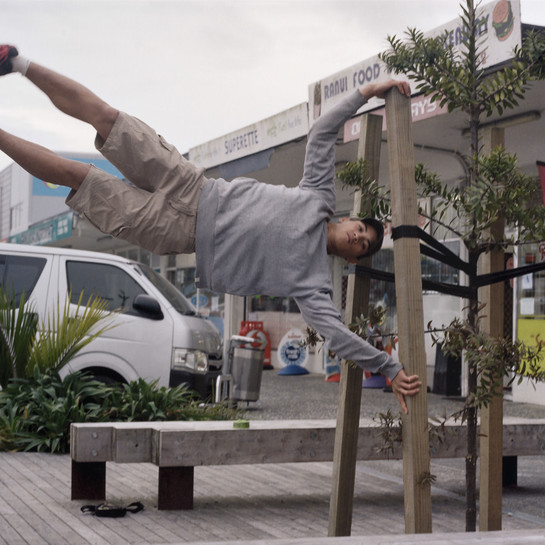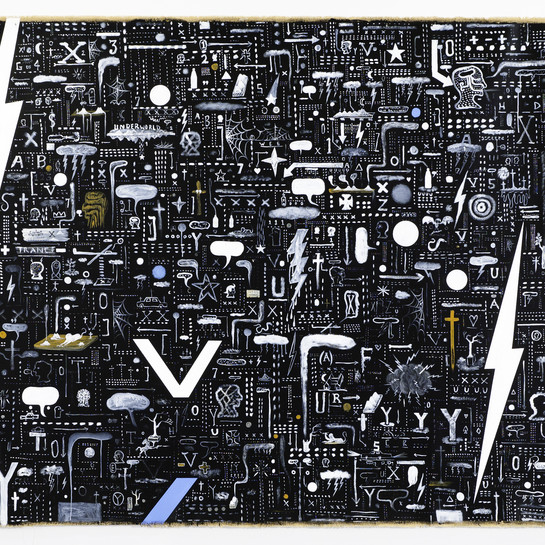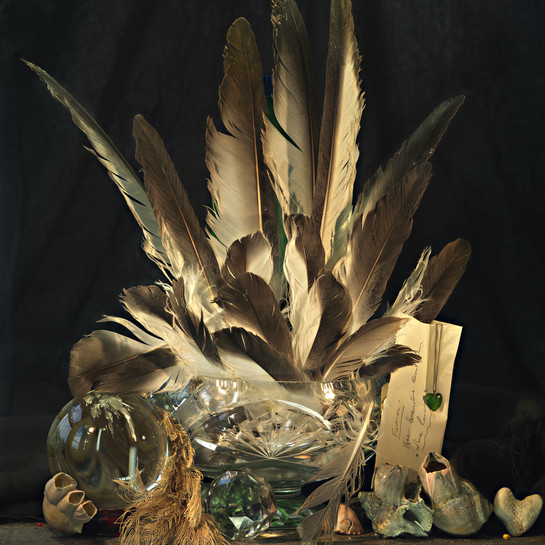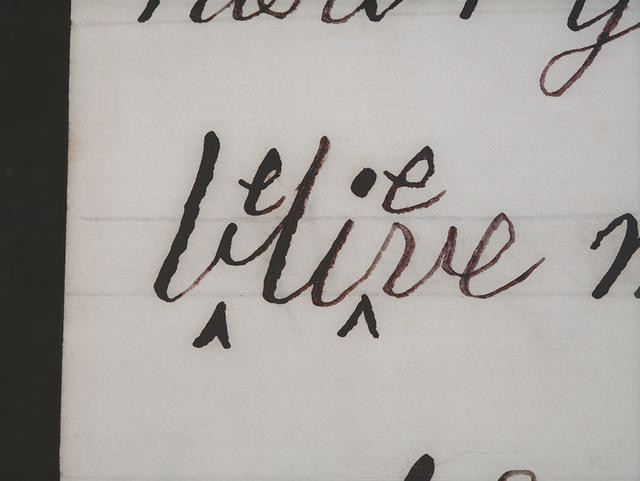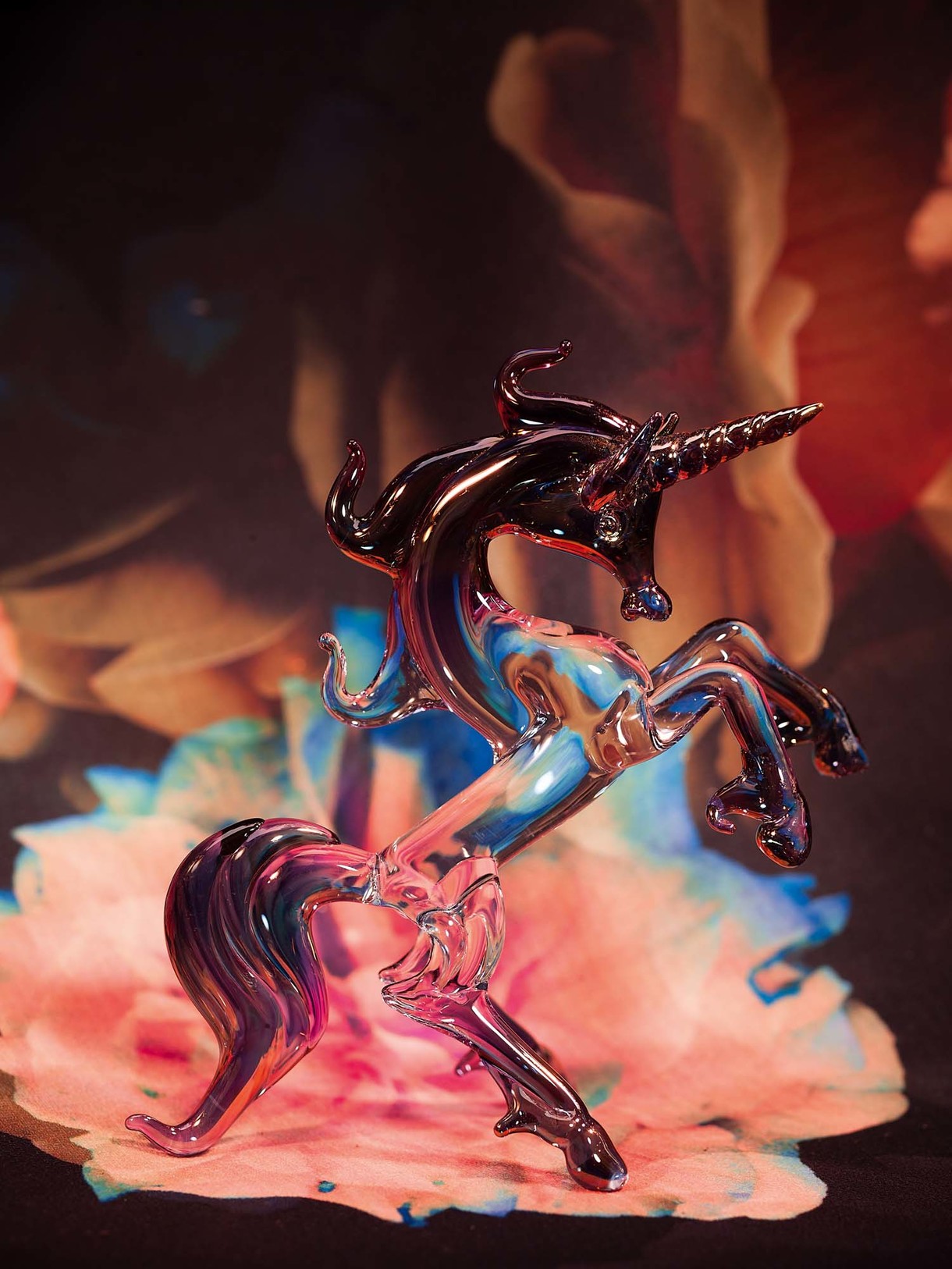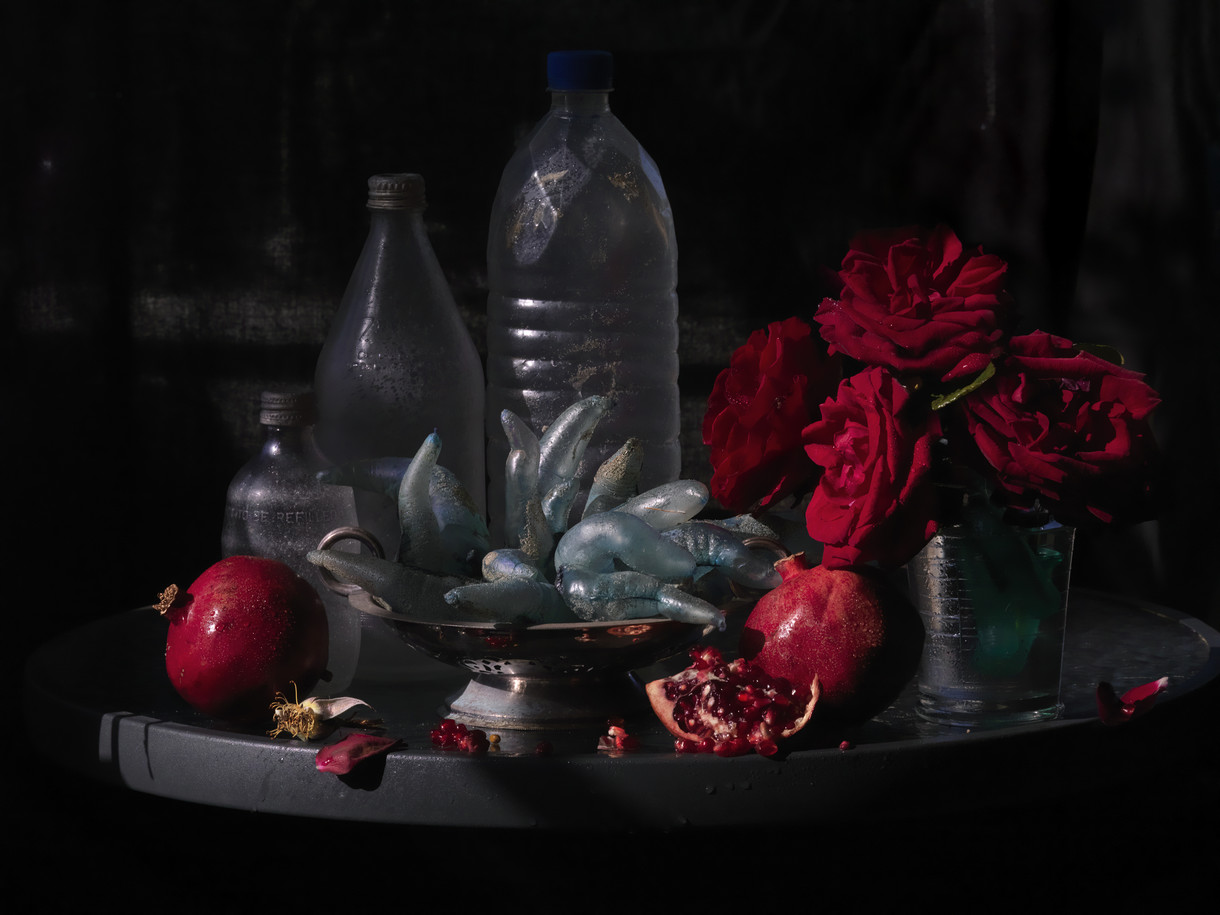Fiona Pardington
Aotearoa New Zealand, b.1961
Kāi Tahu,
Kāti Māmoe,
Ngāti Kahungunu,
Māori,
Clan Cameron,
Scottish
Believe
- 2015
- Photograph
- Gift of the artist, 2016
- 1401 x 1763mm
- 2016/024
Tags: monochrome, words
History often only tells one side of the story. This photograph by Fiona Pardington was inspired by visiting the archive of Dr A. C. Barker at Canterbury Museum. He was the ship’s surgeon on the Charlotte Jane, the first colonial ship to reach Canterbury, and made photographs of early Christchurch. The letters his children wrote to their uncle in the 1860s provide a view of early Canterbury childhood from the perspective of colonising settlers.
Fiona has said: “I was drawn in by the delicate fine paper, iron gall inks, smudged and blotched marks, spelling mistakes and a smeared fingerprint – a tantalising forensic touch. I immediately had an aching feeling in my bones, for the land, the birds impacted by the Pākehā kids and their guns, gulls and adventures. I could feel their father standing there with his camera, and marvelled at the wobbly copperplate words giving a rare and earnest view into a child’s world in the Christchurch bush teeming with a luxuriance of native wildlife I could only mourn today.”
(Perilous: Unheard Stories from the Collection, 6 August 2022- )
-----------------------------------------------------------------------
Read about another artist's approach to Walter Lowry Buller.
Exhibition History
[Your Hotel Brain 13 May 2017 - 8 July 2018] (https://christchurchartgallery.org.nz/exhibitions/your-hotel-brain)
Believe, urges Fiona Pardington’s photograph. The word isn’t easy to read, and takes some work to decipher, written as it is in laborious Victorian copperplate, and initially misspelled—the missing es have been inserted later as corrections. Unreadable fragments of other words surround it. Pardington has zeroed in on a single word in a larger document—and the context of that historical document is important—but when we first encounter it, it’s simply as a statement, or perhaps a gentle instruction, which speaks directly to the contemporary viewer: Believe.
The word appears in a letter written by a boy named Arthur Llewellyn Barker in Christchurch to his uncle back in England, during the 1860s. Arthur was a son of Dr A. C. Barker, the ship’s surgeon on board the first British colonial ship to reach Christchurch, the Charlotte Jane. Dr Barker was also known for his photographs of early Christchurch; with Believe and the other works in the series titled Childish Things, Pardington forges a link back to Barker as a kind of local artist-ancestor.
Pardington says of her encounter with Arthur’s letters: “I had an aching feeling in my bones, for the land, the birds impacted by the Pākehā kids and their guns, gulls and adventures. I could feel their father standing there with his camera, and marvelled at the wobbly copperplate words giving a rare and earnest view into a child's world in the Christchurch bush. […] We read in these children's stories to their uncle a softly reflected, innocently faceted view of important men looking for moa, the siblings finding puffballs and rowboats, and their father taking photographs.”
(Your Hotel Brain 13 May 2017 - 8 July 2018)
Fiona Pardington: A Beautiful Hesitation, 9 July – 6 November 2016
This photograph, given to Christchurch by the artist to mark the reopening of the Gallery following its earthquake closure, extracts a fragment of text (the word 'believe', with the 'e's inserted later) from a letter written by Arthur Llewellyn Barker to his Uncle Matthias Barker in the 1860s. When artist Fiona Pardington visited Canterbury Museum in 2009, curator Natalie Cadenhead showed her the letters Dr Alfred Charles Barker's children wrote to their uncle Matthias during the 1860s. Dr Alfred Charles Barker (1819-1873) was the ship’s surgeon on board the Charlotte Jane, one of the Canterbury Association's famous ‘First Four Ships’, and is also remembered for his early photographs of Christchurch. His children’s letters document their experiences in colonial Canterbury, mentioning notable figures such as Walter Lawry Buller (lawyer, naturalist and infamous ‘bird stuffer’) and Julius von Haast, the first director of Canterbury Museum. Closely related to her earlier works that reclaimed and brought to light taonga within public collections (such as 'Mauria Mai, tono ano'), Pardington’s photographs of the letters reframe them as fragments, preserved from another time and world-view, emphasising how contemporary perspectives add new meaning to these early descriptions of Canterbury life.
Of these works, Pardington has said: “I immediately had an aching feeling in my bones, for the land, the birds impacted by the Pākehā kids and their guns, gulls and adventures. I could feel their father standing there with his camera, and marvelled at the wobbly copperplate words giving a rare and earnest view into a child's world in the Christchurch bush teeming with a luxuriance of native wildlife I could only mourn today. I was equally horrified and fascinated that the Barker children's daily activities seemed to centre on killing: tracking, shooting, skinning birds all day, punctuated by looking for flowers and falling out of trees, all of which seemed to qualify them as junior naturalists in the ways of their father's friends Mr Buller and Mr Haast. We read in these children's stories to their Uncle a softly reflected, innocently faceted view of important men looking for Moa, the siblings finding puffballs and rowboats, and their father taking photographs.”
Fiona Pardington was born in Auckland. She is of Scottish and Māori (Ngai Tahu, Kati Mamoe) descent. Since graduating with a degree in photography in 1984 from the University of Auckland, Pardington has exhibited widely and lectured on photography throughout New Zealand. She lives in Auckland.
